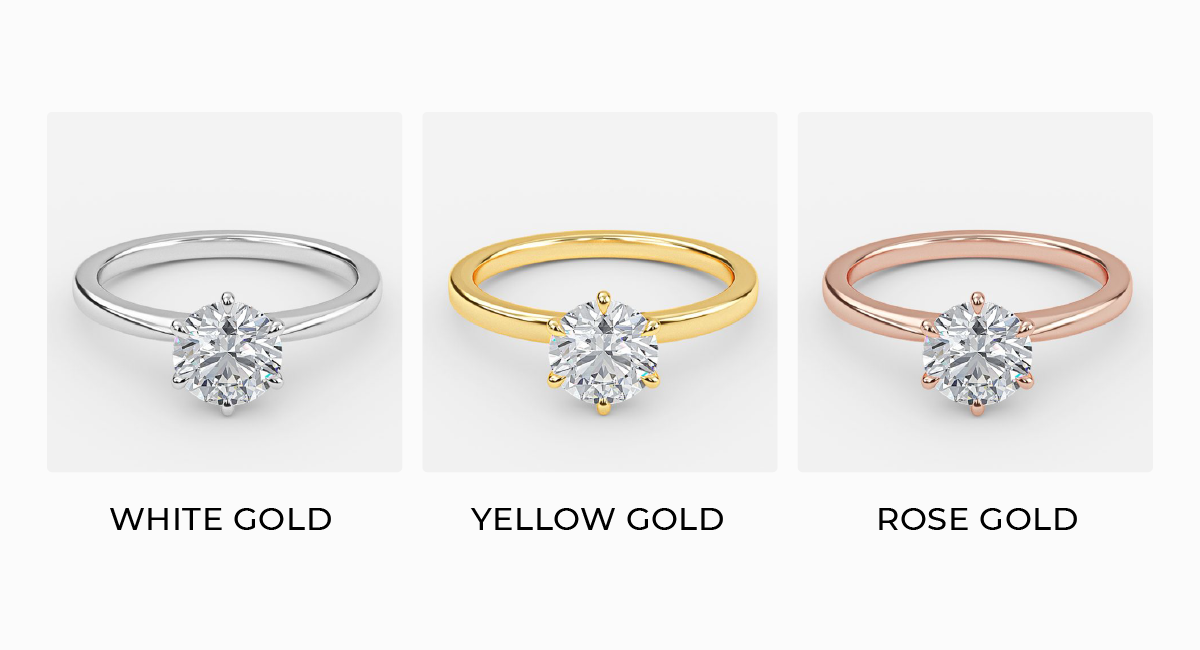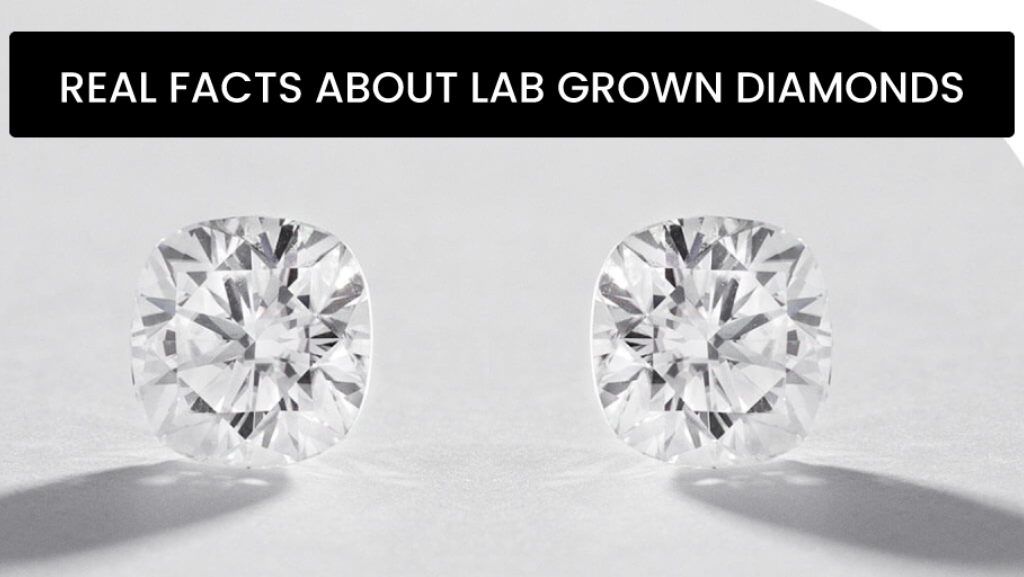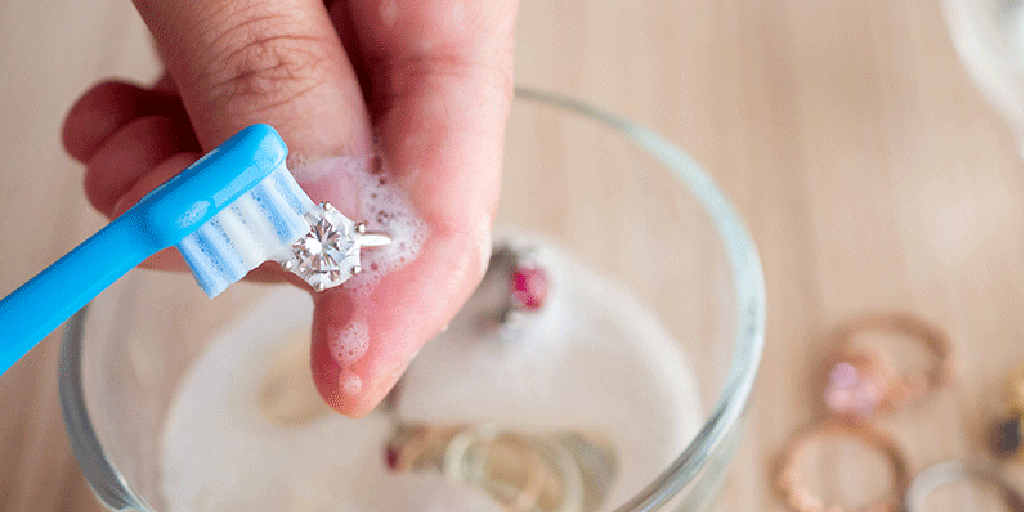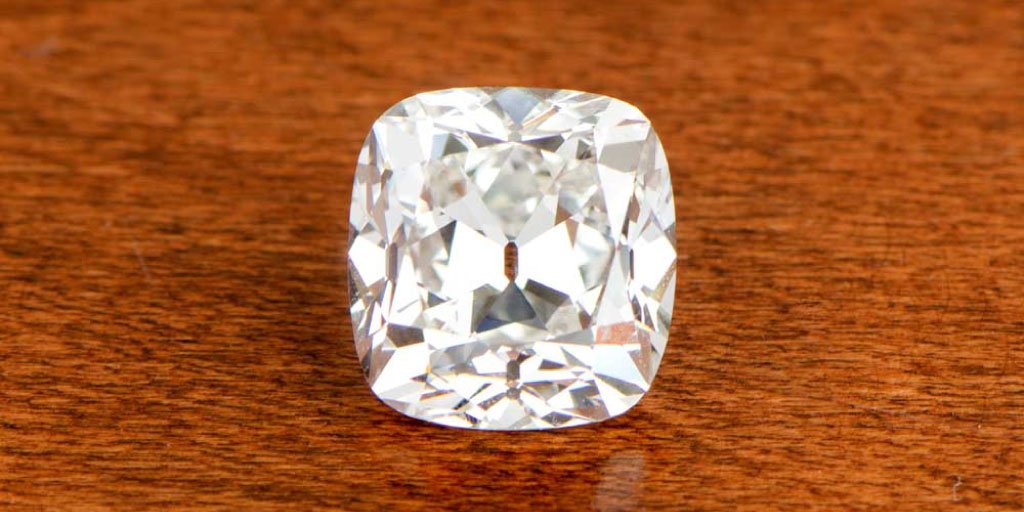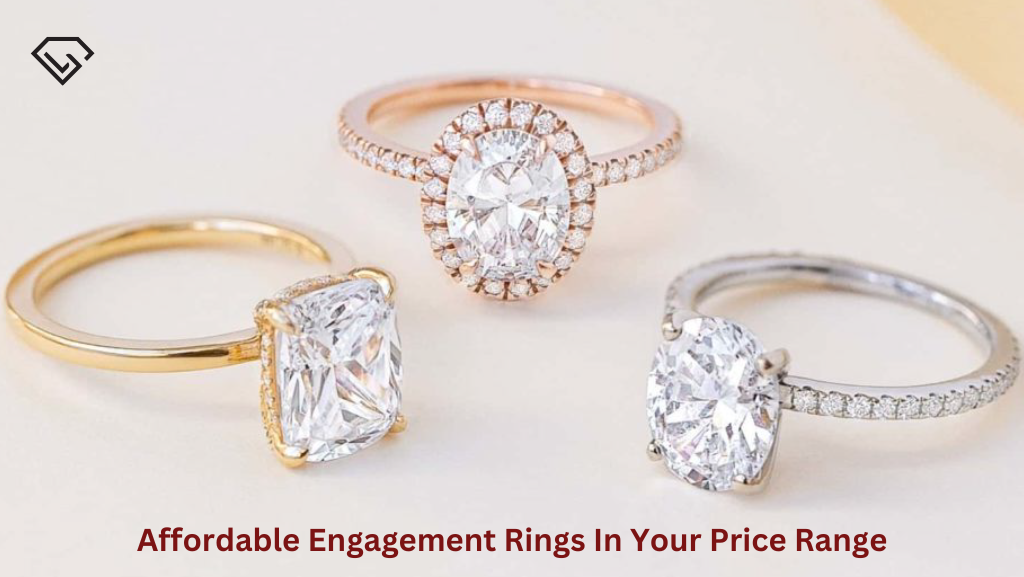Lab Created Diamond Color Grade: What to Look For
In the realm of lab created diamond color grade evaluation holds significant importance and should be carefully contemplated before any purchase.
Despite the absence of natural irregularities in lab created diamonds, color grading plays a crucial role in defining the distinctive characteristics of the diamond. Therefore, it is essential to grasp the concept of color grading when considering a lab created diamond purchase.
Diamonds are in demand the entire time of the year, and this has been the trend for years and years now. The major concern of the people buying them is the color and look of the diamond. Everybody wants a unique and rare look for their diamonds and this to an extent depends on the cut and the color along with the other 2 aspects.
The 4 C’s of the diamonds that are very much relevant before making a purchase are the cut, clarity, color, and carat. Out of these all here we will discuss the importance of the color and the lab grown color diamonds and whether should one consider them or not.

The Most desired colors for the diamonds are the colorless and white ones and the yellowish and brown tint diamonds are not preferred by people. As they reflect less color to our eyes and thus the shine and sparkle are less in them which is quite an important factor for the buyers when it comes to diamonds.
So diamond color is a very important aspect that cannot be ignored. The more colorless the diamond looks the more graceful and desirable it is.
In Fact, lab created diamonds have very few inclusions and blemishes as compared to naturally found diamonds. But they aren’t completely flawless and still have a few distinctions when it comes to color, quality, and the other desired traits in diamonds. The diamonds which have a less color grade also cost less but they don’t look that great and are not preferred by many. For a quality buying experience you should also refer to the lab grown diamond color chart and color scale.
Hence, when working within a specified budget, the most advisable choice for a purchase is a lab created diamond with meticulous attention to color grading.
Facts to be considered:
- It directly has a huge impact on the price we pay for the diamonds
- The grade of the color should always be checked and determined only by professionals
- The grading criteria of the fancy colored diamonds are different than the colorless ones
- The design and the setting of the ring should also be looked at before deciding on the color grade of the diamond.
Lab Grown Diamond Color Scale
GIA, a leading authority on diamonds, established the 4Cs (color, cut, clarity, carat) as a quality benchmark. GIA certification ensures precise grading. IGI, founded in 1975, provides certificates for various gemstones, offering specific grades for lab created diamonds. GIA focuses on natural diamonds, while IGI is recognized for its expertise in lab grown diamonds and gemology. The diamond color scale by GIA gives a comprehensive guidance on the different hues of diamonds that exist. You can seamlessly secure lab certified diamonds from IGI, GIA, and GCAL at prices below the market value.
The IGI which is the International Gemological Institute certificate is a must for the verification in the case of the lab grown diamonds as the GIA was there in the case of the natural diamonds. The IGI offers a particular grade for the lab created diamonds and the GIA on the contrary gives only a range. The IGI is done on the scale of D to Z wherein Z is given to the yellowish pale ones.
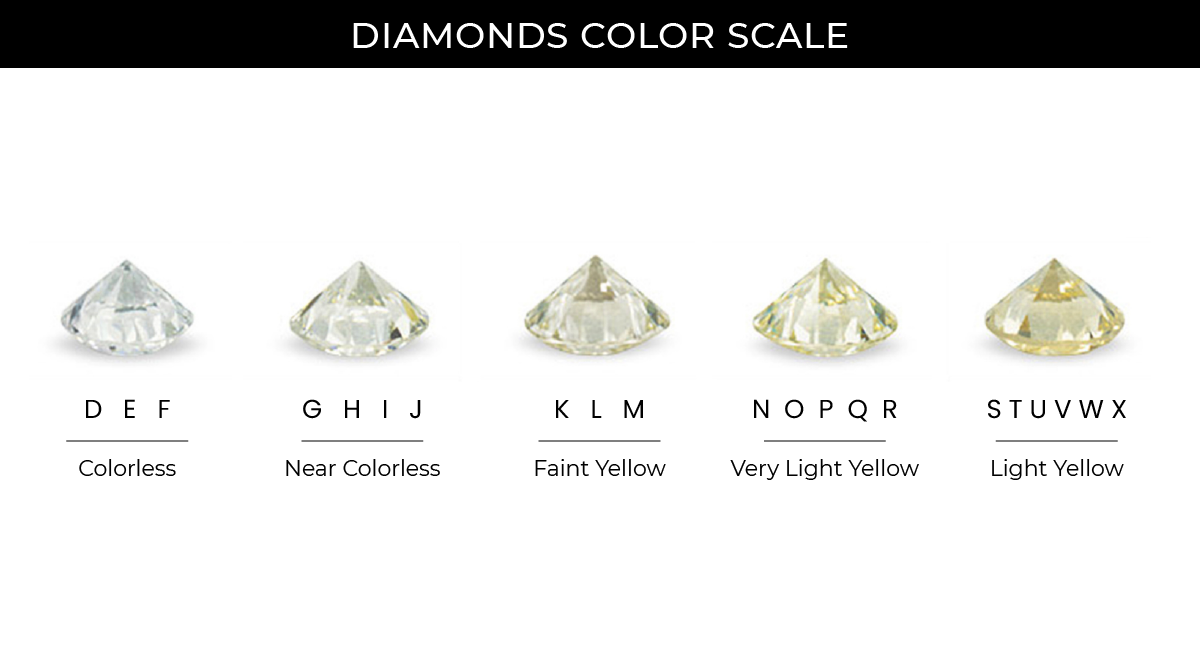 Colorless: Diamond color D is the highest color grade which signifies that the diamond is in its purest form the color is almost colorless And has no color even after the magnification process. There is not much difference in the E and F grades to the naked human eye as they look quite similar. Only the ones who have been in this field for years and our experts will be able to tell the difference in the D, E, and F grades.
Colorless: Diamond color D is the highest color grade which signifies that the diamond is in its purest form the color is almost colorless And has no color even after the magnification process. There is not much difference in the E and F grades to the naked human eye as they look quite similar. Only the ones who have been in this field for years and our experts will be able to tell the difference in the D, E, and F grades.
Nearly Colorless: The G-J-graded diamonds also have nearly no color, are colorless to a level and look the same as the D to F graded diamonds.
The price difference between diamonds with grades G-J and those with grades D and F is significant, with G-J diamonds being far more affordable than their counterparts. This disparity is a result of the fact that G-J diamonds have just trace amounts of color, which makes them a cost-effective option for individuals who are looking to strike a compromise between quality and affordable price.
Faint Tint: The diamond color range in the K to M have a little yellowish color in them even when seen by the naked human eye. They are also preferred by quite a few people as they tend to give us a yellow-gold look.
Very Light Tint: They are very much lower in price and the brown and yellow tint is very much visible. This range of diamonds is not recommended by professionals.
Light Tint: These diamonds come in the range of S to Z and the yellowish and brownish colors are very much visible even at a distance and are usually avoided by the majority.
Shape
Carat
Cut
Color
Clarity
Price
emerald
1.21
Ideal
D
VS1
$589 $421
View
round
1.50
Excellent
E
VS1
$780 $600
View
round
1.29
Excellent
F
VS2
$546 $420
View
emerald
1.33
Ideal
E
VVS1
$876 $626
View
round
1.52
Excellent
D
VS1
$881 $678
View
round
1.28
Excellent
F
VVS2
$614 $472
View
round
1.20
Ideal
E
VS1
$559 $430
View
emerald
1.46
Ideal
F
VVS1
$973 $695
View
emerald
1.24
Ideal
D
VVS2
$582 $416
View
emerald
1.22
Ideal
E
VVS2
$582 $416
View
round
1.30
Ideal
D
IF
$656 $625
View
round
1.31
Excellent
E
VS2
$655 $504
View
round
1.42
Ideal
F
VVS2
$711 $547
View
emerald
1.20
Ideal
F
VS1
$515 $368
View
emerald
1.99
Ideal
F
VVS2
$1389 $992
View
round
1.27
Excellent
D
VVS2
$664 $511
View
emerald
1.42
Ideal
E
VS1
$732 $523
View
emerald
1.24
Ideal
D
VVS1
$683 $488
View
round
1.61
Excellent
D
VS2
$840 $646
View
round
1.21
Excellent
G
VS1
$547 $421
View
Lab Grown Diamonds: Understanding Colors and Production Methods
Yellow Diamonds:
Yellow hue in lab grown diamonds is caused by the presence of single nitrogen atoms (type Ib). With High Pressure High Temperature (HPHT) technology, a widely used method, the color is carefully controlled. Nitrogen is either extracted from the atmosphere or managed through the composition of the catalyst metal alloy. In Chemical Vapor Deposition (CVD) technology, less commonly used, color control is more challenging, as nitrogen is part of the gas mixture.
Green Diamonds:
The green color results from vacancies in the diamond structure. Both HPHT and CVD technologies typically involve irradiating type Ib or IIa diamonds with fast electrons (1-3 MeV) to achieve this color.
Pink and Red Diamonds:
Pink and red hues are due to nitrogen-vacancy (NV) centers. In HPHT technology, the process involves growing low-saturated yellow diamonds (type Ib), irradiating them with fast electrons, and annealing them in furnaces. In CVD technology, NV centers are either formed similarly to HPHT or directly during the growth process.
Blue Diamonds:
The blue color is a result of single boron atoms in the diamond structure (type IIb). HPHT technology effectively controls the color by adding a small fraction of boron to the metal catalyst alloy. In CVD technology, where color control is more challenging, boron is added to the gas mixture in the growth chamber.
Purple Diamonds:
Although scientists are unable to pinpoint the cause of the purple color of diamonds, they believe that boron and hydrogen have a role. Blue is induced by the presence of boron, and purple is induced by the presence of hydrogen. Purple diamonds are created by using synthetic diamonds of the 1b type that have a particular nitrogen content, irradiating them with an electron beam, and then annealing them in a vacuum.
The unusual and characteristic purple color grade of lab created diamonds is controlled by this process, which must be carried out under specific conditions.
Gray Diamonds:
The combination of hydrogen-related defects and structural imperfections in the crystal lattice gives gray diamonds their color. The technologies of Chemical Vapour Deposition (CVD) and High-Pressure High Temperature (HPHT) both have difficulties in achieving the appropriate gray color. While color control in HPHT is achieved by the manipulation of growth conditions, accurate color control in CVD is hindered by the complexity of regulating hydrogen during the development process.
Brown Diamonds:
Brown color may result from deformation disturbances or nickel-nitrogen centers. HPHT technology rarely produces brown diamonds, as it depends on the catalyst metal alloy’s composition. In CVD technology, poor synthesis processes often lead to the formation of dislocations and structural disturbances, resulting in brown diamonds.
Orange Diamonds:
Orange diamonds are created via CVD and HPHT methods, and to get different colors such as mild orange, bright orange, intense orange, and vivid orange, they go through a second LPHT treatment after they are first created. Nitrogen-vacancy (NV) centers frequently give lab grown diamonds their seductive orange color. While color may be carefully controlled with HPHT, perfect circumstances for NV center production in orange diamonds are difficult to achieve with CVD technology.
Colorless Diamonds:
Colorless diamonds (type IIa) are free from impurities. HPHT technology, a common method, ensures color control by using “getters” (gas absorbers) in the metal-catalyst alloy. In CVD technology, color control is less precise, often resulting in a light brownish tint.
Color Scale of White Diamonds
Many of the sellers of diamond claim that the second most important trait to look for in the diamond is the color and with their selling and marketing skills they also convince people to buy the diamond with the highest color grade of all the available options. White color diamond is the most viable option.
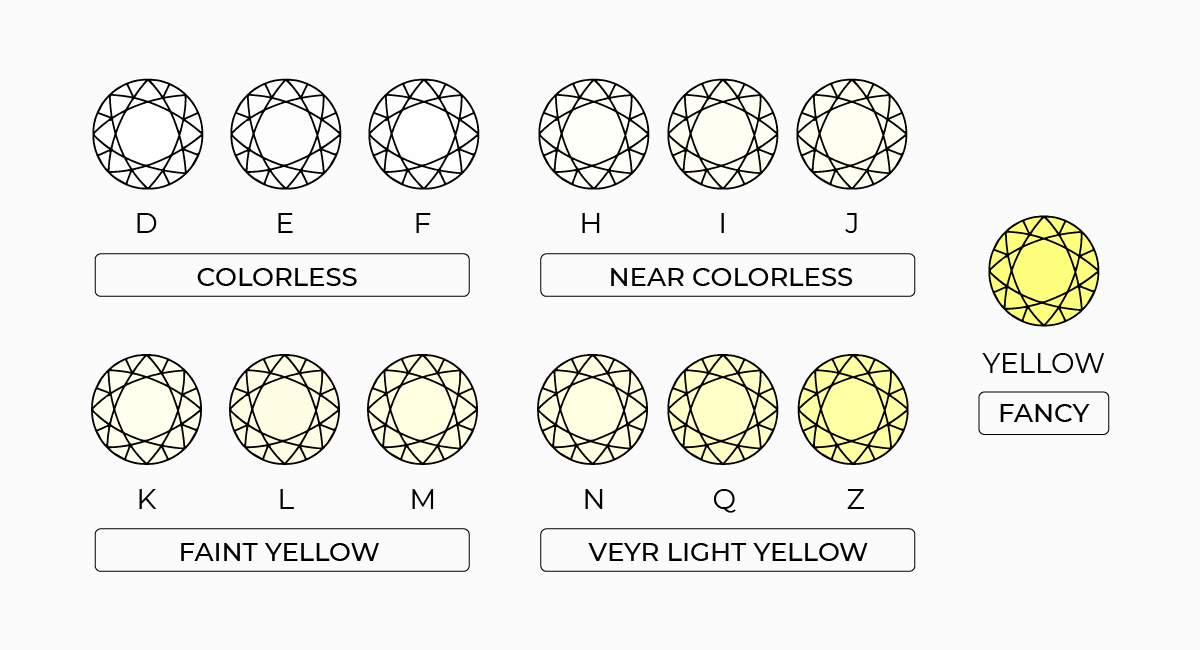
No doubt the color plays a significant role in the overall look and beauty of the lab diamond but the differences in the grading scales in various scales are quite tiny and are not even visible to the naked human eye. The difference between G to J grades is quite very difficult to distinguish without a proper magnifying glass but the cost of all these degraded varies a lot.
So it is advised to spend accordingly and wisely. The remaining amount of the money out of the budget can be spent on other aspects such as the cut of the diamond as it also plays an important role in the overall look of the diamond.
Best Lab Created Diamond Color Grades for the White Gold, Platinum, and Rose Gold Engagement Rings
In this section, we have analyzed the best grades for each type of ring.
Best Metal: Two popular metal options exist for white gold engagement rings i.e., white gold or platinum. White gold, an alloy prized for its luster and affordability, possesses a brilliant shine compared to other metals. In contrast, platinum, though more naturally appealing, shares similar characteristics. Jewelers favor platinum for its enhanced malleability, setting it apart from other metals in craftsmanship.
White Gold Engagement Rings
- Round Cut: Diamond color H-J color grade
- Emerald, Princess, and Asscher Cuts: G-I color grade
- All other Diamond Shapes: F-H color grade
Platinum Gold Engagement Rings
- Round Cut: H-J color grade
- Emerald, Princess, and Asscher Cuts: G-I color grade
- All other Diamond Shapes: F-H color grades.
Rose Gold Engagement Rings
- Round Cut: J-M color grade
- Emerald, Princess, and Asscher Cuts: I-K color grade
- All other Diamond Shapes: I-J color grades.
Solitaire Engagement Rings
- Round Cut: K-M grades.
- Emerald, Princess, and Asscher Cuts: J-K grades.
- All other Diamond Shapes: I-J grades.
Pave or Side-Stone Rings
- Round, Princess, Emerald, and Asscher: G-I grades.
- All other Diamond Shapes: F-H grades.
Halo Engagement Rings
- All Diamond Shapes: F-H Grades.
The Impact of Different Settings
The setting of the stone in the ring plays a very important role. It enhances the color of the diamond. The color and the setting for the ring should be chosen in such a manner that they complement each other and enhance each other’s look and beauty.
When we place an I-colored diamond next to a high-graded diamond it looks like the I colored only. Many experts and gemologists use the traditional comparison method to grade the colors of the diamonds even to date. They place the diamond on a white folded card next to a master diamond to compare and determine the color.
The Center Diamond Color as Compared to the Side Stones
Many people go for side stoned rings these days as they look quite pretty and are very much in demand and fashion. In this case, make sure that the colors you choose should complement each other and do not overshadow each other’s look and beauty.
The side stones should either be of the same color as that of the center stone or should be a bit darker in color as we want the center diamond to be the main point of focus and attraction in the elegant ring.
How Does Fluorescence Interact with the Color of the Diamond?
Out of all the diamonds which are made in the labs only a few of them have the original fluorescence. While the others are enhanced using various techniques and equipment. Fluorescence is the ability of a diamond to respond to UV light. As in the UV light makes whites whiter and black posters glow.
If the fluorescence is not proper and is extra strong or medium the overall look of the diamond will be dull and shabby but makes a lower Color graded diamond appear whiter. So for the diamonds in the D and G range, strong fluorescence should be avoided.
It’s widely believed in the diamond trade that fluorescence has a big impact on diamond color and, in turn, cost. For example, it is believed that blue fluorescence can improve diamonds with color grades of I to M by neutralizing yellowish tones, potentially improving them by one grade. On the other hand, fluorescence is frequently regarded as a flaw in D-H diamonds.
Start your search for the ideal lab created diamond at LGD, the one-stop shop for a rainbow of breathtaking color grades. Discover the perfect shade that complements your style from our extensive selection.
Use the enchanted promo code to get a special discount on your order. Take your sparkle to the next level with Loose Grown Diamond – the place where budget meets brilliance.
Conclusion
There are a few aspects that need to be taken a look at before purchasing the diamonds such as the Cut, Clarity, Color, and Carat play an important role in the beauty of a diamond. The decision of whether to go for natural diamonds or lab grown diamonds is solely a personal choice. The lab grown is a bit cheap and environment friendly and thus becomes an ethical choice.
The man-made diamonds should be chosen wisely and the ones which resemble the natural shine and brilliance of the diamonds. One can choose a diamond in the G to I range that looks white but costs much less than those in the D to F range.
So with the change in the trends and the choices of the people these diamonds for sure are the future of the diamond industry as in eye are more cheap and ethical than natural ones. get are also blemishes and inclusions free as in yey are made in the labs.
Additionally, it must be noted that beyond delving into color grades for your diamond purchase, it’s crucial to consult tools such as the diamond size chart and the diamond price calculator. These resources offer invaluable insights, empowering you with essential knowledge to make informed decisions when acquiring your precious gem.
FAQs
What is the color of a diamond?
Diamonds come in various colors, but the most prized ones are colorless or near-colorless, allowing maximum light reflection.
What color diamond is the most expensive?
The most expensive diamonds are colorless (D grade), as they exhibit exceptional purity and brilliance.
What is the best color for a diamond?
The best diamond color depends on personal preference, with colorless or near-colorless grades being popular choices. You can also refer to the diamond color guide for the same.
What is the most common fluorescence color in a diamond?
The most common fluorescence color in diamonds is blue, with approximately 35% exhibiting this optical effect.
What color diamond should I get?
Choose a diamond color based on personal preference; colorless (D-F) and near-colorless (G-J) grades are popular options.

